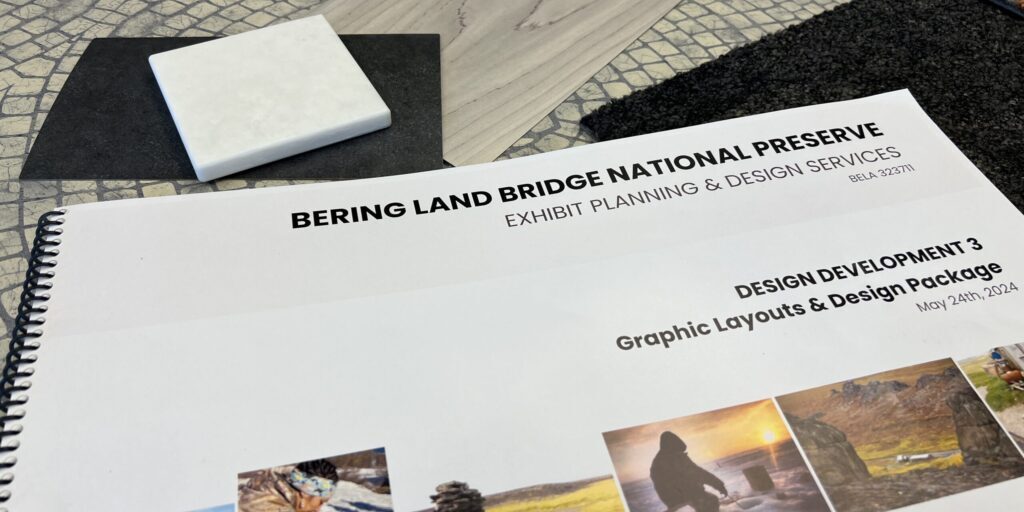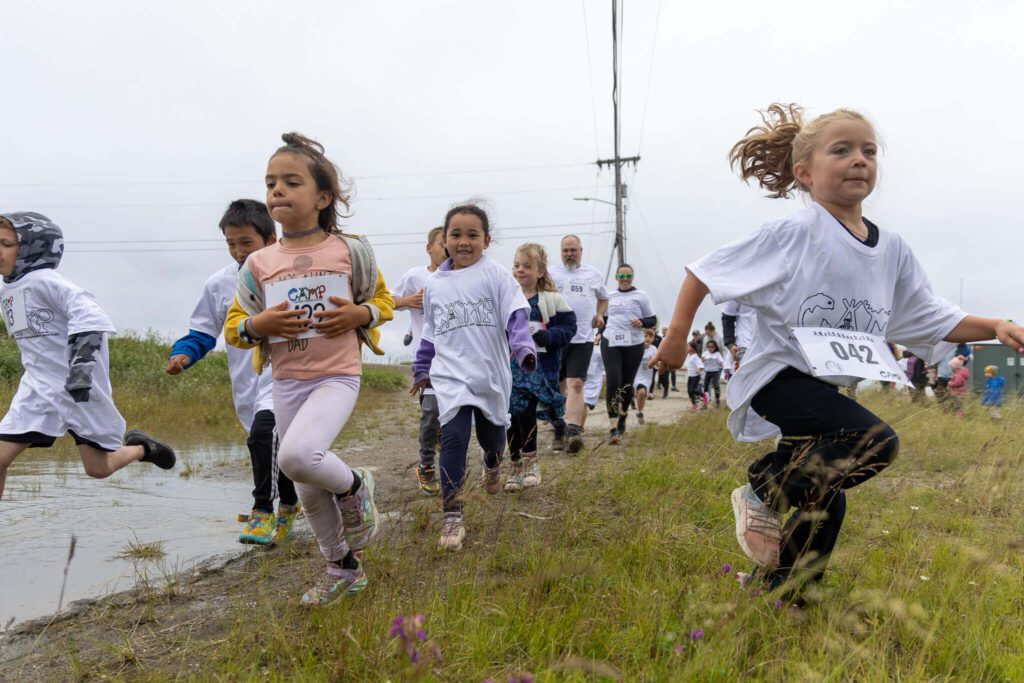Thick, 93-page booklets printed on legal size paper lay scattered on tables in a conference room. Just outside the room is a barren office space, once home to the National Park Service Bering Land Bridge National Preserve Visitor Center. Sitting at the tables is a mixture of park service employees and residents of the region, pausing from poring over the booklets and powerpoint presentations to enjoy an assortment of native foods including muktuk, seal, smoked salmon, and wild dandelion.

The gathering is a “tribal workgroup” assembled by the park service to consult on upcoming renovations to the preserve’s visitor center. Representatives from Shishmaref and Wales were flown in for the two day in-person event to guide the direction of the renovation that is set to begin later this summer.
Notably, the renovation will increase the amount of exhibit space open to the public, allowing the park to think bigger for what’s possible in the preserve’s visitor center. According to Superintendent Jeannette Koelsch, the new center will shift its focus from the ice age to the land the preserve occupies– and the people that have inhabited it for generations.
“We miss a whole larger story of the communities around the preserve, Alaska Native culture, and traditions and life ways that we never were able to fully provide to the visitor, given the small space,” Koelsch said.
Koelsch, a longtime resident of the region and Alaska Native herself, expressed deep personal and professional fulfillment in seeing the project move forward with tribal consultation at each step.
“It’s something completely necessary. We can’t truly tell a correct or accurate story without the tribal workgroup members or without the elders from the Sitnasuak Elders Committee.”
– Jeanette Koelsch, Superintendent Bering Land Bridge National Preserve
The workgroup reviewed nearly every detail of the renovation, down to the etchings on artifacts and the color of the carpet. The group stressed the importance of including native language on signage. Importantly, Inupiaq words for key features in the exhibit space are listed first, followed by the English name.
The move intends to acknowledge the deep history native people have in the region. Nome, where the park has been headquartered since the preserve was established in 1980, was known as “Sitnasuak” by natives long before gold miners flooded the town at the turn of the 20th century.
Robert Tokeinna Jr., a member of the tribal workgroup from Wales, shared his appreciation for the project’s approach to incorporating indigenous perspectives.
“It’s going to be about the people, with the people, alongside the people, and telling their story,” Tokeinna said. “It’s an opportunity for our people to show not only the culture that surrounds us but also the heritage and the abundance of nature in the preserve.”
The project also includes creating a new park film that will present the preserve through the eyes of its native inhabitants.
“It’s not about park staff talking about the preserve,” Koelsch explained. “It’s through the eyes of the people who have always utilized the land.”
Efforts to overhaul the visitor center began in 2017 but stalled due to the park headquarter’s unique location inside a Sitnasuak Native Corporation building. According to Koelsch, National Park Service funding isn’t typically awarded for renovations to buildings the government doesn’t own.
This led the park to apply for funding from The Leona M. and Harry B. Helmsley Charitable Trust. After receiving grant money from the trust’s tribal engagement fund as well as support from several regional partners, the renovation was finally able to move forward.
“The park is grateful for the partnership of the National Park Foundation and the generous support of The Leona M. and Harry B. Helmsley Charitable Trust that have made this project possible,” Koelsch said. “Also with our partnerships with Sitnasuak Native Corporation Elders Committee, the Native Villages of Shishmaref, Wales, and Deering, and in partnership with Kawerak Inc. and Maniilaq Association.”
The project, now wrapping up the “Design Development 3” stage, will begin construction work this summer. Completion is planned for the summer of 2025.
Bering Land Bridge National Preserve







